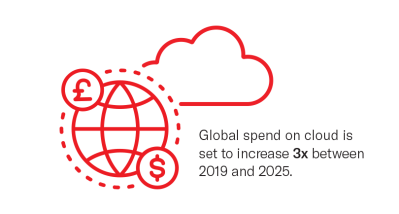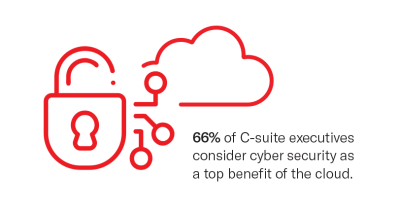On-premise vs cloud is an ongoing debate. Many businesses struggle to decide which data storage solution works best for them. Cloud computing is growing at an unprecedented pace, as we have seen in our latest insight on cloud migration.
Many organisations in different industries, from the public sector to the arts, find that adopting cloud solutions to store and manage their data online helps improve their operations. According to Gartner, enterprise IT spending on cloud computing will overtake spending on traditional IT worldwide by 2025.

However, cloud computing is not always the best solution for every business. Some organisations might prefer to manage data and workflow entirely on-premise, or with a hybrid approach. This insight looks at some of the advantages and drawbacks of both methods. It will help you decide what works best for your business.
What is on-premise computing?
On-premise computing allows companies to store all their data at their physical location. Companies purchase the license for the software they need, and that software is installed exclusively within the organisation’s premises. This allows for a level of data security that, for some organisations, is not achievable with cloud computing.
What is cloud computing?
Cloud computing allows organizations to outsource their computing resources. They can do this by hosting them remotely through a third-party provider, rather than hosting them in-house. It is often the preferred solution for large companies with international clients and assets, as data can be accessed from anywhere in the world.
Want to find out how cloud can improve your business?
What are the pros and cons of on-premise vs cloud?
Depending on your organisational needs, you might want to consider the cloud, hybrid or on-premise solutions. This section explores a few pros and cons of on-premise vs cloud.
Cost
Organisations that choose on-premise data storage will need to sustain the cost of hardware, software, physical space, and maintenance. Of the infrastructure, maintenance costs must be considered. Upgrades might be costly if more space is needed.
Conversely, in cloud storage solutions, the cloud provider is responsible for maintaining data and applications. Companies only pay a subscription cost based on how much cloud storage they need, saving time and money.
Scalability
As mentioned above, on-premise environments can be costly to upgrade. They require hardware and physical space, and are difficult to scale back if the needs of the business change.
Cloud environments can be expanded or scaled back on demand by upgrading the subscription or adding and scaling back licenses.
Security
Despite the cost, an on-premise environment is sometimes the best solution for businesses in highly-regulated industries. It allows for full control of the data within the limits of the physical data centre.
However, a survey by Oracle found that 66% of US C-suite executives consider cyber security as the top benefit of cloud software. Businesses opting for a cloud or hybrid environment will need to ensure their provider is compliant with relevant data protection laws.

Use cases for on-premise computing
Here are a few examples of instances where businesses might prefer an on-premise environment:
- In-office file and print for organisations still relying heavily on paperwork, such as accounting or public sector.
- In-house app and code development, which is generally more affordable for small businesses.
- Custom and business apps, such as HR software or particular types of design software, are easier to use on-premise for many employees.
Use cases for cloud computing
Here are a few instances where businesses might choose cloud computing:
- Cost-effective disaster recovery, as there is no need to replace hardware.
- Application testing, which can be done in virtual environments through the cloud.
- Big data analysis through automation tools, which can improve business predictions and customer satisfaction.
Not using cloud computing effectively? Let ROCK help.
Conclusion
The choice between on-premise and cloud computing depends on a range of different factors. These factors include the size and requirements of your business. Sometimes, a hybrid environment might work best.
ROCK can help you find the most efficient and cost-effective solutions for your organisation. Explore our services and discover our cloud migration, modernisation, and on-premise offering.